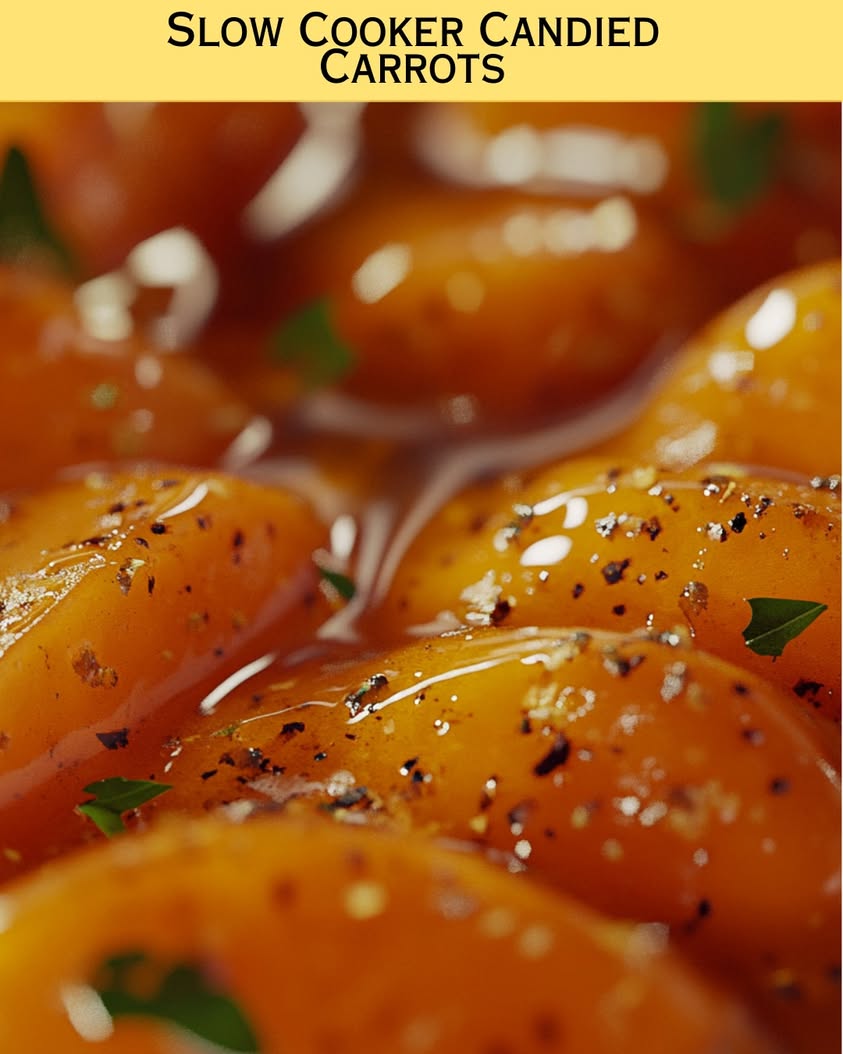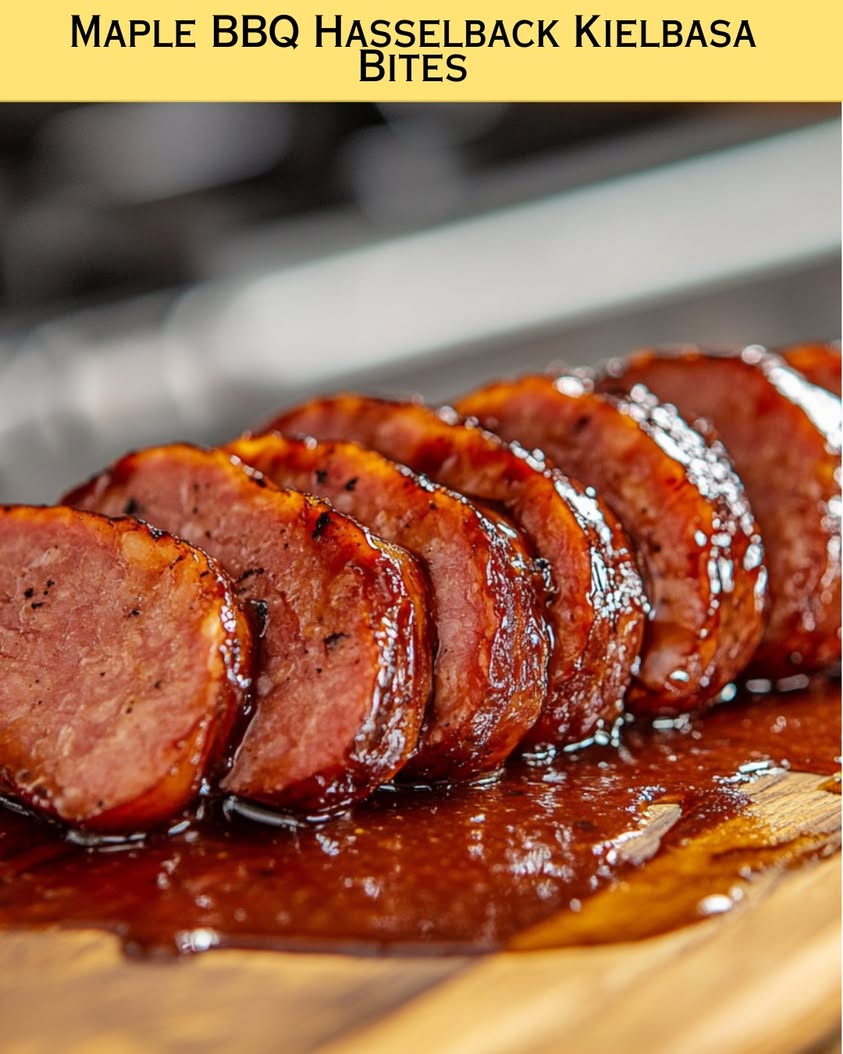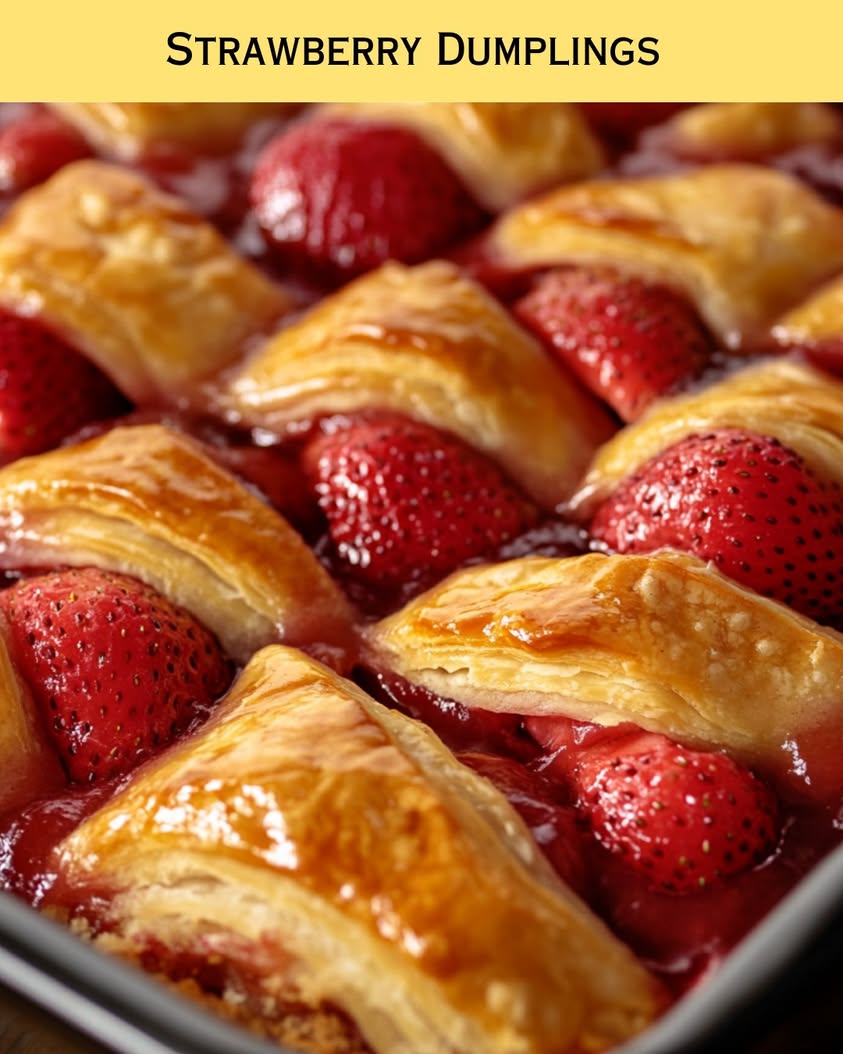Slow Cooker Candied Carrots: A Sweet and Savory Delight
Slow Cooker Candied Carrots are the perfect side dish to bring sweetness and vibrant color to your dinner table. The tender carrots, slowly cooked to perfection, soak up the delicious flavors of brown sugar, butter, and a hint of cinnamon, offering a delightful blend of sweet and savory. Whether it’s a holiday feast or a casual weeknight dinner, these carrots will steal the show and leave everyone wanting more.
Imagine the aroma wafting through your kitchen as these carrots cook low and slow. They become not just a side dish, but a comforting addition, inviting everyone to gather around the table. With their enticing colors and sweet glaze, they’re sure to be a hit with both kids and adults alike. Let’s dive into this simple yet delightful recipe for Slow Cooker Candied Carrots!
Quick Recipe Highlights
- Flavor Profile: Sweet and buttery, with an aromatic hint of cinnamon.
- Texture: Tender carrots with a glossy, syrupy coating.
- Aroma: A warm and inviting scent of melted butter and brown sugar.
- Visual Appeal: Vibrant orange carrots glistening under a layers of glaze.
- Skill Level Needed: Beginner-friendly, perfect for novice cooks.
- Special Equipment: A slow cooker is essential for achieving that perfect tenderness.
Recipe Overview
- Difficulty Level: This recipe is easy to follow, making it great for beginners.
- Category: A fantastic side dish that complements various main courses.
- Cuisine: Classic comfort food inspired by traditional American meals.
- Cost: Inexpensive, requiring only a few humble ingredients.
- Season: Perfect for fall and winter gatherings, especially during the holidays.
- Occasion: A wonderful addition to holiday dinners and family gatherings.
Why You’ll Love This Recipe
The taste and texture of Slow Cooker Candied Carrots are undeniably captivating. The balance of sweetness from the brown sugar, richness from the butter, and the natural earthiness of the carrots creates a dish that delights both the palate and the senses. These carrots become so tender that they practically melt in your mouth, making them irresistible alongside any meal.
Convenience is another reason to love this recipe. Simply chop the carrots, toss them into the slow cooker with the other ingredients, and let the appliance do the work for you. This slow cooking method allows the flavors to meld beautifully over time, enhancing the overall experience without requiring much hands-on effort.
In terms of nutrition, carrots are packed with vitamins and minerals, making this dish not only a delicious treat but also a healthy option. They offer a significant amount of Vitamin A, which is important for vision and skin health. This sweet dish can relish a side of guilt-free indulgence, as you showcase the natural goodness of carrots.
When entertaining, these Slow Cooker Candied Carrots are sure to be a conversation starter. Their vibrant color and unique flavor bring a festive spirit to any gathering and elevate the presentation of your meal. Serve these at your next potluck, and they’ll undoubtedly impress guests and leave them asking for the recipe.
Finally, the cost-effectiveness of this dish makes it an excellent choice for home cooks on any budget. The ingredients are simple and affordable, ensuring that you can create a stunning side without breaking the bank. This recipe’s accessibility makes it a go-to for both novice cooks and seasoned chefs looking to impress with minimal effort.
Historical Background and Cultural Significance
Carrots have a longstanding history that dates back thousands of years when they were first cultivated in Persia. Initially grown for their leaves and seeds, the root vegetable we know today was selectively bred in Europe and quickly became a staple in many culinary practices. Over time, carrots have transformed into one of the world’s most popular vegetables, appearing in a wide range of dishes worldwide.
In the American culinary landscape, candied vegetables can trace their roots to the tradition of preserving food through sweetening. This method enhanced both flavor and shelf life, especially during the colder months. Slowly cooked candied carrots highlight the spirit of American comfort food, elevating staple ingredients into something unique and special.
The recipe for candied carrots has evolved over the years, with various adaptations seen in households across the United States. Modern versions often introduce varied spices or additional sweeteners like maple syrup, showcasing a delicious blend of traditional and contemporary flavors that cater to diverse palates.
Regionally, adaptations exist where different spices and cooking techniques are incorporated, reflecting local tastes and culinary influences. For example, Southern U.S. adaptations may include a heavier use of cinnamon and nutmeg, while Midwestern versions might showcase a simpler flavor profile highlighting the natural sweetness of the carrots themselves.
Ingredient Deep Dive
Carrots
Carrots are not only a flavorful root vegetable but also rich in carotenoids, which play an essential role in eye health and provide powerful antioxidants. When selecting carrots, opt for firm, brightly colored ones that feel heavy for their size. To store, keep them in the fridge in a perforated plastic bag to maintain freshness, and consider using the tops in other culinary applications to reduce waste. If fresh carrots aren’t available, frozen carrots can be a suitable substitute, though they may require slight adjustments in cooking time.
Brown Sugar
Brown sugar is integral in achieving that memorable sweetness in Slow Cooker Candied Carrots. Its molasses content adds depth and complexity, enhancing the overall flavors. When purchasing, look for soft sugar that feels moist; if it hardens, simply microwave it briefly to restore its texture. For those looking for alternatives, coconut sugar can work beautifully while providing a slightly different flavor profile.
Common Mistakes to Avoid
- Overcooking the carrots can lead to a mushy texture; aim for the recommended cook time.
- Not peeling the carrots can result in an unpleasant texture; always remove the skins.
- Under-seasoning the dish might lead to bland flavors; ensure you balance the sweetness with spices.
- Using old or dry carrots can greatly affect the dish’s outcome; always choose fresh produce.
- Ignoring size consistency in cutting can result in uneven cooking; all pieces should be similar in size.
- Not stirring halfway through can lead to uneven flavor distribution; give the mixture a gentle mix.
- Utilizing low-quality butter can affect flavor; opt for unsalted butter for the best results.
- Using glass containers that aren’t slow-cooker safe can lead to breaks; always use appropriate cookware.
- Skipping the sugar completely can lead to blandness; the sugar is key to creating the glaze.
- Not letting the dish sit after cooking can prevent the flavors from fully melding; allow for a resting time.
Essential Techniques
Slow Cooking
The slow cooking technique is pivotal for the development of flavors in this recipe. It’s essential to low heat cooking that allows the carrots to soften while absorbing the sugars and spices. To master this technique, set your slow cooker on low heat for a longer duration to achieve tender results. The common pitfall is turning up the heat, which can lead to uneven cooking. Look for the carrots to become fork-tender as a visual cue for success.
Caramelization
Caramelization enhances the flavors significantly, imparting sweetness and deeper color to the dish. For optimal results, ensure that the sugar dissolves thoroughly and begins to bubble, signifying the start of caramelization. Common pitfalls include not stirring the mixture adequately, which can lead to burnt spots, and not using enough sugar to achieve that beautiful glaze. A bubbling mixture with a rich, deep color means you are on the right track.
Pro Tips for Perfect Slow Cooker Candied Carrots
1. Use fresh, organic carrots for the best flavor and texture—baby carrots are convenient but higher-quality regular carrots elevate the dish.
2. If you want a hint of citrus, add a splash of orange juice or zest before cooking for a refreshing twist.
3. Experiment with spices like ginger or nutmeg for an added depth of flavor that can transform the classic recipe.
4. Adjust the sweetness by adding maple syrup or honey, ensuring a balance that suits your taste buds.
5. For a nutty flavor, consider topping the finished dish with toasted pecans or walnuts just before serving.
6. Make it a bit spicy by adding a pinch of red pepper flakes for a surprising contrast to the sweetness.
7. Feel free to substitute water or broth for some of the butter to make it a slightly healthier option without sacrificing flavor.
8. Garnish with fresh herbs like parsley or thyme for added color and a fresh note upon serving.
Variations and Adaptations
Slow Cooker Candied Carrots can adapt beautifully to various tastes and seasons. Regional variations might introduce local spices, while fall versions may utilize pumpkin spice for a cozy flavor. For those following seasonal trends, incorporating seasonal vegetables like parsnips can create a delightful mix, bringing out the sweetness in both.
Health-conscious cooks can modify this recipe by reducing sugar and butter; experimenting with agave or honey provides a natural sweetness. Texture modifications are also possible; for a crunch, you can add toasted nuts right before serving to contrast the tender carrots. For a colorful display, consider layering different colored carrots or pairing them with vibrant vegetables to lure in the eyes.
Presentation alternatives could include serving the candied carrots in a hollowed-out pumpkin during fall festivities for an impressive seasonal effect. For a more modern approach, consider smashing the carrots slightly before serving to create a rustic presentation that appeals to the trendy eye.
Serving and Presentation Guide
When plating Slow Cooker Candied Carrots, consider using a large, decorative bowl that brings out the dish’s vibrant color. For garnishing, a sprinkle of fresh herbs like parsley or chopped chives adds a great visual touch that entices the senses even before tasting. Pairing with roasted meats or holiday ham complements the flavor profile beautifully.
Modern serving suggestions could lean toward individual servings in small jars or ramekins, giving each guest a personal touch. Keep temperature considerations in mind; serving these carrots warm allows the glaze to maintain its delightful syrupiness.
Divide the portions based on serving sizes—usually around a half cup per person often suffices, but don’t shy away from larger portions when entertaining!
Wine and Beverage Pairing
When it comes to selecting a wine pairing for Slow Cooker Candied Carrots, a lightly chilled Riesling or a fruity Pinot Grigio beautifully complements the sweetness of the dish. Their crisp acidity balances the rich flavors without overwhelming the palate.
For a no-alcohol alternative, an infused sparkling water with fresh citrus or herbs provides a refreshing accompaniment that enhances the meal’s overall experience. Alternatively, consider serving a mild herbal tea to complement the gentle sweetness of the carrots without competing flavors.
Storage and Shelf Life
To store leftover Slow Cooker Candied Carrots, place them in an airtight container and refrigerate promptly after serving. They can typically be reserved for up to 3-4 days. For longer storage, freezing is an option; ensure they are in a freezer-safe container and can last for several months if stored correctly.
Signs of spoilage include an off smell, discoloration, or a sticky texture; discard if these signs are apparent. When reheating, it’s best to do so in a microwave or on a stovetop with a splash of water to keep them moist and flavorful.
Make Ahead Strategies
For convenient meal prep, consider cutting and pre-measuring the carrots and the remaining ingredients the day before. Store them layered in a bowl or container in the refrigerator to maintain freshness. This method not only saves time but also streamlines the cooking process on the day of serving.
Allowing the flavors to meld for an hour or two after cooking can enhance the taste, so consider cooking earlier in the day and reheating just before serving. Adding fresh herbs like parsley or thyme just before serving adds freshness that brightens the dish following reheating.
Scaling Instructions
If you want to halve the recipe, simply cut all ingredient measurements in half while maintaining the same cooking time. For doubling or tripling, ensure that your slow cooker can accommodate the increased volume; cooking times may need slight adjustments.
When scaling up, also consider using a large slow cooker or split the contents into two containers to ensure even cooking. Pay attention to temperature and depending on quantity, check if additional seasoning adjustments are needed for flavor consistency.
Nutritional Deep Dive
Slow Cooker Candied Carrots are inherently packed with vital nutrients. Rich in beta-carotene, the carrots offer considerable Vitamin A, essential for vision health. The fiber content assists with digestion and promotes overall gut health. Understanding the macro breakdown reveals a balance of carbohydrates predominantly derived from sugars, paired with little fat.
Micronutrient analysis highlights potassium, which supports heart health, and antioxidants present in carrots guard against several chronic diseases. Portion control becomes vital for managing calorie intake; however, this dish can be adjusted to suit dietary needs, just reducing sugar to maintain healthy levels.
When focusing on weight management tips, serving these carrots in moderation and alongside lean proteins can present a satisfying yet balanced plate.
Dietary Adaptations
Adapting Slow Cooker Candied Carrots to fit specific diets is quite manageable. For gluten-free options, using certified gluten-free soy sauce in any adaptations would suffice. Dairy-free modifications can use vegan butter or coconut oil to replace regular butter without compromising flavor.
Vegan and low-carb enthusiasts can opt for monk fruit sweetener or erythritol as sugar substitutes while still preserving the sweetness. Keto dieters might find this dish works nicely with a touch of cinnamon to enhance flavors without adding carbohydrates.
For paleo dieters, focus on using organic ingredients and avoid pre-packaged items that may contain added sugars or preservatives. The adaptability to low-FODMAP diets can be achieved as well; reducing the serving size will help tailor this recipe to individual tolerance levels.
Troubleshooting Guide
Experiencing texture issues often arises from overcooking; keep an eye on doneness to ensure the carrots remain tender but not mushy. Flavor balance problems may result from insufficient seasoning or sugar, so taste testing is vital during cooking.
If your Slow Cooker Candied Carrots have been overcooked, consider reintroducing some fresh herbs or citrus zest at the end to liven them up. Timing concerns can lead to either undercooked or overcooked results; maintaining proper serving times on your slow cooker can create optimal results.
Consider ingredient substitutions like using different sugars if the flavor is off-balance; a swap for honey can enrich the taste. Equipment challenges may arise with different slow cookers; monitor cooking times to understand your particular model better.
Recipe Success Stories
Community feedback has been positive regarding this dish; many have shared their adaptations and personal twists. Readers frequently praise the convenience of making it ahead, reporting success in impressing guests without the stress of last-minute preparation.
Variations such as adding apples or raisins to the mix have delighted fans, offering a new twist on a beloved classic. Adaptation stories include families integrating this sweet side into their holiday traditions, noting it has become a must-have at gatherings.
Photography tips often suggest highlighting the carrots’ vibrant color against a dark plate, making the dish appear even more appealing. Social media shares demonstrate how the easy preparation allows home cooks to focus on main courses without sacrificing any side dish quality.
Frequently Asked Questions
Can I use frozen carrots for this recipe?
Yes, frozen carrots can be used, but it’s best to thaw them first for more even cooking. You may need to adjust the cooking time slightly, as frozen vegetables often release excess moisture.
How do I know when the carrots are done?
The carrots are done when they are fork-tender. You can poke them with a fork, and if they slide off easily, they are ready to serve.
Can I make this recipe ahead of time?
Absolutely! You can prepare the carrots and store them in the refrigerator for 1-2 days before cooking them in the slow cooker.
What other spices can I add to the recipe?
Feel free to experiment with nutmeg, ginger, or even a splash of vanilla extract for a unique twist to the flavor.
Are Slow Cooker Candied Carrots gluten-free?
Yes, the ingredients used in this recipe are naturally gluten-free, but always double-check labels on pre-packaged items.
How do I reheat leftovers?
Reheat gently in the microwave or on the stovetop with a splash of water to retain moisture and prevent them from drying out.
Can I use other vegetables?
Yes! This recipe can also accommodate parsnips or sweet potatoes for a delightful variation.
Is this recipe suitable for meal prep?
Yes, it stores well in the refrigerator and can be reheated, making it perfect for meal prep.
What is the best way to serve the candied carrots?
They are best served warm, either in a large serving dish or individually in small ramekins for a lovely presentation.
Can I double the recipe?
Yes, just ensure that your slow cooker has enough capacity to handle the increased volume and adjust cooking time as needed.
Additional Resources
For more delicious recipe ideas, consider exploring other slow cooker side dishes that blend convenience and flavor. Technique guides on slow cooking can enhance your culinary skills, while ingredient information will help you master the basics of each component involved in cooking.
Invest in quality kitchen tools that streamline your cooking experience; a good-quality slow cooker can significantly enhance the outcome of your dishes. Seasonal variations can inspire creativity, bridging distinct flavors from different times of the year to create unique experiences.
Join the Conversation
We love hearing from our readers! Share your thoughts on this recipe in the comments and let us know how your personal adaptations turned out. Don’t forget to snap a picture of your creation and tag us on social media; we’d love to see your version of Slow Cooker Candied Carrots.
Looking for feedback? Join our cooking community, where home cooks like you share tips, experiences, and variations. Engage with us for discussions on culinary topics, technique improvements, and more delightful recipes!
The Recipe
Slow Cooker Candied Carrots
Serves: 4-6
Prep Time: 15 mins
Cook Time: 4 hours
Total Time: 4 hours 15 mins
Kitchen Equipment Needed
- Slow cooker
- Cutting board
- Sharp knife
- Measuring cups and spoons
- Wooden spoon
Ingredients
- 2 lbs carrots, peeled and cut into 1-inch pieces
- ½ cup brown sugar
- ¼ cup unsalted butter, melted
- 1 tsp ground cinnamon
- Salt to taste
Directions
- Place the cut carrots in the slow cooker.
- In a bowl, mix melted butter, brown sugar, cinnamon, and a pinch of salt.
- Pour the mixture over the carrots and stir gently to coat.
- Cover and cook on low for 4 hours, or until the carrots are tender.
- Once done, stir again and serve warm.
Recipe Notes
- You can adjust the sweetness by adding more or less brown sugar according to your preference.
- For a unique flavor, consider adding a dash of nutmeg or a splash of orange juice.
- Leftovers can be refrigerated for up to 4 days or frozen for future use.




